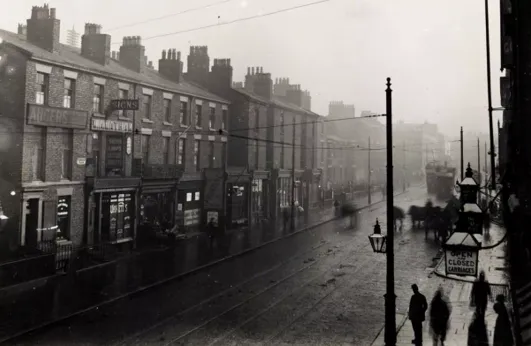
Victorian Era: A Personal Reflection on Gildart Street and Surroundings

By the late 19th century, the streets we’ve come to know well, had developed a split personality — full of contrasts, and not always flattering ones.
On the one hand, there was St. Mary Magdalene’s Church on what was then called Blandford Street (now Kempston Street). It stood tall as a symbol of community and faith — a place where people could come together, seek comfort, and find some moral compass in an otherwise chaotic world.
But just outside its doors, the area had built up a rough reputation. Locals called it “Little Hell,” and for good reason. It sat right in the middle of what was widely known as Liverpool’s red-light district. That label stuck until as recently as 2018 when the Fabric District began to take shape.

Around 1890, the situation really escalated. Historical accounts say the area had become Liverpool’s “capital of debauchery.” It is believed that there were around 235 brothels operating here, with about 460 sex workers living and working in overcrowded lodging houses and crumbling courts.
One story that stood out to us was about a brothel on Blandford Street, that supposedly catered to older men looking for very young girls — grim, but it paints a clear picture of the times. The area was a strange mix of family homes, dodgy taverns, cheap gin shops, and places offering much darker services. People were living “cheek by jowl” with "a diverse range of people, from dock workers to families just trying to survive.

Kempston Street (back when it was still Blandford) and the nearby Constance Street saw it all. The courts and terraces were packed with some of the poorest families in Liverpool. Living conditions were rough — not much light, poor sanitation, and way too many people squeezed into tiny spaces.
In 1894, the council decided to rebrand. They renamed Blandford Street to Kempston Street — likely to shake off its bad rep. “Kempston” didn’t have any local ties; it may have been plucked from somewhere quieter and less notorious, just to give the area a fresh start.
That name change came as part of a broader cleanup. There were early slum clearances and moves to crack down on prostitution. The authorities were more active in the area, trying to get rid of the worst of the courts, some of which were condemned as totally unfit to live in.
Yet, despite all this, life kept moving. Churches, missions, and schools played their part in trying to support the community. St. Mary Magdalene’s Church had been around since the 1830s and continued to anchor the area through the chaos. Located roughly at 68–74 Kempston Street, the church and its vicarage stood out — both physically and spiritually — in the middle of a pretty grim setting.
By the end of the century, you could feel the shift. Liverpool was changing, and this part of the city was finally being pulled along with it, both in terms of its buildings and its reputation.
There’s a lot more to uncover, and I’m looking forward to sharing more of what we find.